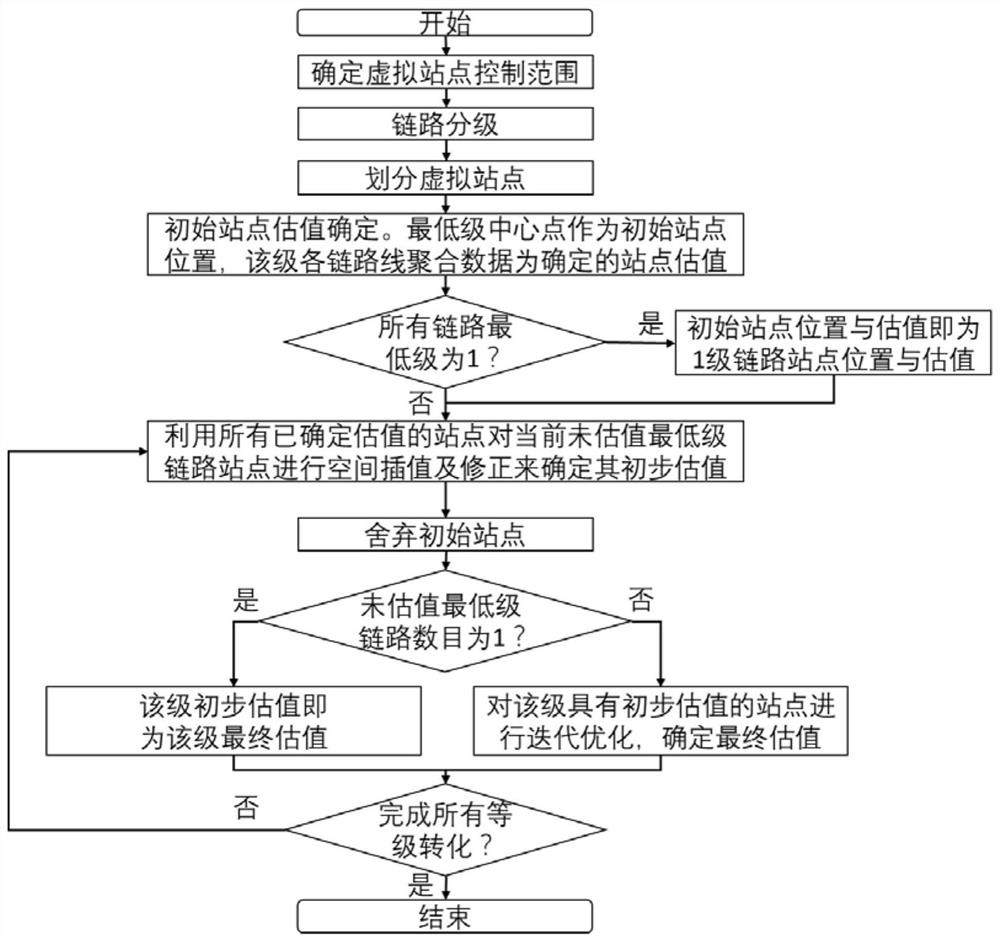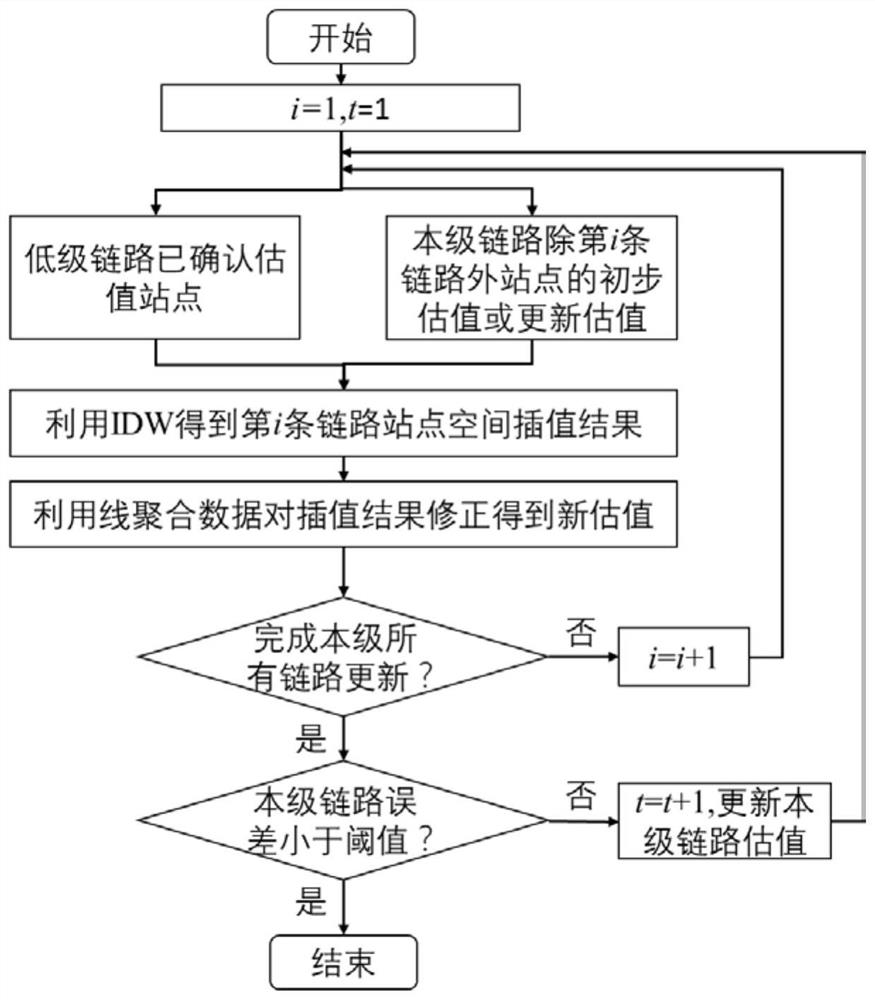Step-by-step linear aggregation rainfall data scale conversion method
A technology for rainfall data and scale conversion, applied in data processing applications, instruments, forecasting, etc., can solve the problems of data having no practical value and models that cannot be directly applied, and meet the requirements of solving sparse problems, reducing the number of links, and improving efficiency effect
- Summary
- Abstract
- Description
- Claims
- Application Information
AI Technical Summary
Problems solved by technology
Method used
Image
Examples
Embodiment 1
[0043] Embodiment 1: The lowest level is the case of a non-level 1 link.
[0044] In the first step, the site control range l is given;
[0045] In the second step, the length L of each link is divided by the control range l and rounded to obtain the level of each link, such as figure 1 Shown can be cut with a circle of radius l, in the appendix figure 1 Among them, the lengths of the 6 links are divided by 1, and 3 2-level links, 2 3-level links, and 1 6-level link are obtained;
[0046] The third step is to discretize the links according to the classification results, divide the links equally according to the link level, and take the center point of each segment link after equal division as the virtual rainfall station, as shown in figure 1 As shown, the level 3 link is divided into 3 equal parts, and the focus of the segment is the virtual site;
[0047] The fourth step is to determine the initial site location and valuation. Since there is no level 1 link, the middle p...
Embodiment 2
[0063] Embodiment 2: The lowest level is a level 1 link situation.
[0064] If there are level 1 links that meet the quantity requirements, then:
[0065] In the first step, the site control range l is given;
[0066] In the second step, the length L of each link is divided by the control range l and rounded to obtain the level of each link;
[0067] The third step is to discretize the links according to the classification results, divide the links equally according to the link level, and take the center point of each segment link after equal division as the virtual rainfall station;
[0068] The fourth step is to determine the initial site location and valuation. Since the lowest level is level 1, the center points of all level 1 links are taken as the initial site location, the aggregated data of each link line at this level is the definite site estimate, and the value of the initial site is the final estimate of the level site;
[0069] The fifth step is the preliminary ...
PUM
 Login to View More
Login to View More Abstract
Description
Claims
Application Information
 Login to View More
Login to View More - Generate Ideas
- Intellectual Property
- Life Sciences
- Materials
- Tech Scout
- Unparalleled Data Quality
- Higher Quality Content
- 60% Fewer Hallucinations
Browse by: Latest US Patents, China's latest patents, Technical Efficacy Thesaurus, Application Domain, Technology Topic, Popular Technical Reports.
© 2025 PatSnap. All rights reserved.Legal|Privacy policy|Modern Slavery Act Transparency Statement|Sitemap|About US| Contact US: help@patsnap.com



